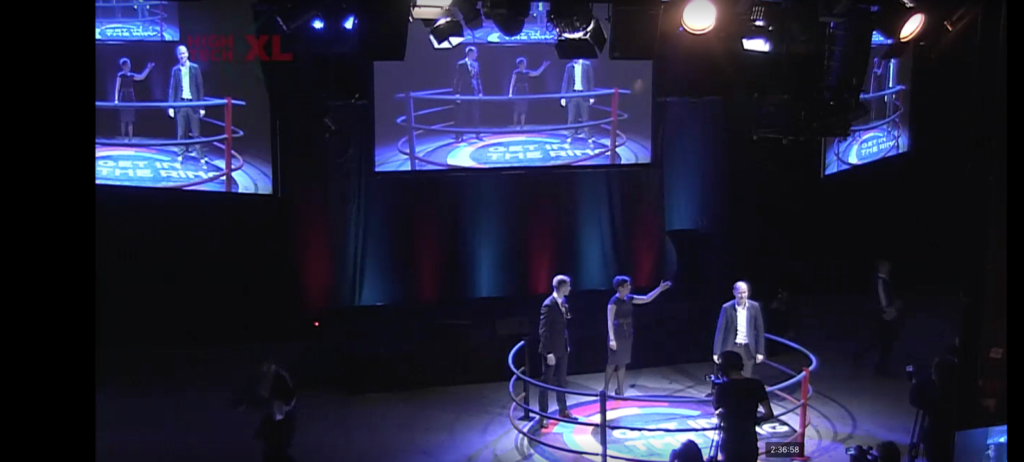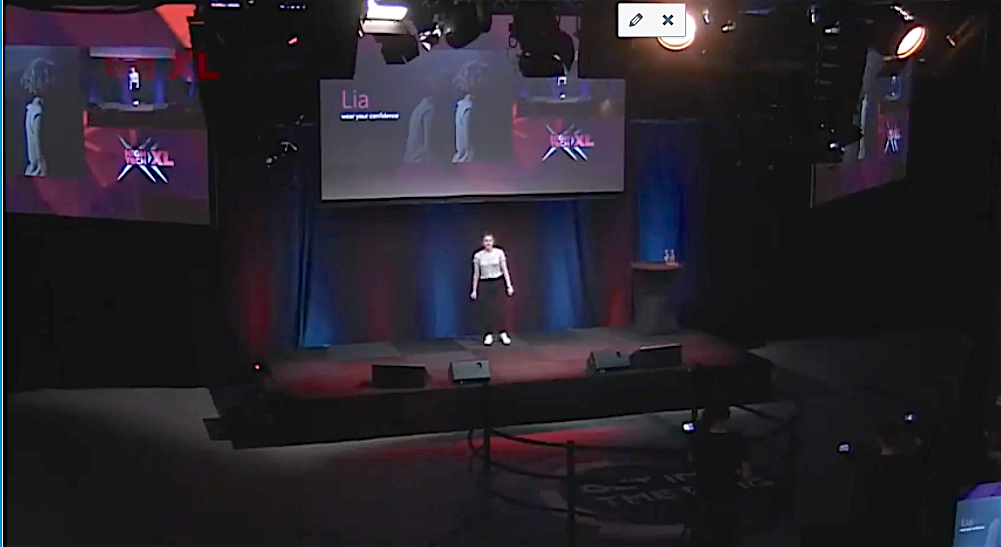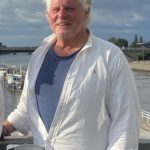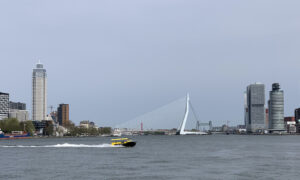(Editor’s note: Last Thursday’s HighTechXL’s Universal Changemakers demo day confirmed what we’ve been saying for a long time: Eindhoven isn’t like Silicon Valley. It is Europe’s Silicon Valley of high-tech hardware. In fact, there were too many great startups to include in one post, so here’s Part 2. (You can watch the full event here on the HighTechXL website.)
 As we stated in Part 1, you know you have a successful high-tech accelerator when investors stand on the stage at your demo day and write checks for hundreds of thousands of euros. Which happened at HighTechXL’s Universal Changemakers demo day.
As we stated in Part 1, you know you have a successful high-tech accelerator when investors stand on the stage at your demo day and write checks for hundreds of thousands of euros. Which happened at HighTechXL’s Universal Changemakers demo day.
But HighTechXL founder and CEO Guus Frericks has another metric to gauge success: Diversity.
Last week, HighTechXL debuted 12 startups that have graduated one of the most grueling hardware accelerators in the world, and four were led by women. Nearly every team has women members.
Our perspective is not merely that of cheerleader or casual observer.
A few weeks ago, we announced our effort to connect American investors in the South and Midwest (far from The Valley) to top startups in the Netherlands, starting with Eindhoven. The 2017 Demo Day helps us make our case … and this post will go to our prospective investors, of course. Because they like to invest and they have the capital and risk profiles to make big bets.
Investors … if you think we put all the great ideas in the first installment, you’d be wrong.
Be prepared to be dazzled.
Onera
 There’s a school of thought that the best product concepts come out of personal frustration. Apparently, Johns Hopkins University agrees, but more on that in a minute.
There’s a school of thought that the best product concepts come out of personal frustration. Apparently, Johns Hopkins University agrees, but more on that in a minute.
Soukaina Adnane had a hard time sleeping. “Over time, it got worse, and I discovered I have a sleep disorder … and I’m not alone.”
One out of five people in the world have a sleep disorder, which can lead to serious issues such as stroke and heart failure.
That’s 70 million just in the United States.
“Sixty percent already have a chronic condition,” Adnane said.
Out of that personal issue came the inspiration to create Onera, a sleep-monitoring patch Adnane told the demo day audience is the only product in the world that will give users a full view of your sleep activity.
Onera tracks depth of REM sleep, breathing, sleep position, heart rhythm and wakeup time, allowing users to exceed at home the effectiveness of sleep clinics, she said.
At last Thursday’s demo day, Adnane announced a partnership with Johns Hopkins University in Baltimore. The plan is to move from the current prototype to market with a final device by March 2018, launching online sales in the U.S. and Europe markets.
The numbers:
Onera is a spin-off of Eindhoven-based digital R&D firm Imec, which has 10 years of research into the technology.
Patents: Imec has five patents for the sleep-monitoring technology. Onera has a functional prototype with clinical validation.
• The patch/software package is priced at 100 euros.
• Imec spun off Onera with a 250,000 euro seed fund in 2016
• To bring the product to market by March 2018, Onera needs to raise 750,000 euros, and Imec is joining this round.
• Initial sales projection after launch for 2018 is 2.5 million euros, reaching 45 million euros by 2020 in the consumer market.
• In a parallel partnership with Johns Hopkins, the plan is to launch Onera Medical by 2020.
UVisio
The Netherlands, Denmark and Norway have among the world’s highest rates of skin cancer deaths, mostly due to fair-skinned Northern Europeans vacationing in sunny climes.
So it’s fitting a possible solution is being developed here in sun-challenged Eindhoven … a solution that has already gotten the attention of one of the biggest makers of sun-protection products.
UVisio CEO Larisa Kryuchkova cited statistics during her demo day pitch for this Berlin-based startup that one out of six people gets skin cancer … including her.
“After several operations and five years can I call myself skin-cancer free,” Kryuchkova told the demo day audience of 1,000 people.
Ninety percent of skin cancer cases are related to uncontrolled sun exposure. But how can you know how much sun is too much sun for your skin type? Because sunscreen behaves differently user by user, with no consistent protection.
Kryuchkova believes her team has the answer … a wearable device that measures sun exposure and notifies the user via an app when they’re approaching exposure limits.
UVisio is far more than a gimmick, she added. UVisio is a system.
“You might think it’s just another wearable and a fancy app. Actually … no. We developed a fully personalized sun protection system … technology based on years of photonics and dermatology research. And we work with B2B customers.”
The back end (this is cloud-based SaaS) analyzes all sorts of information, including user age, product usage, geographic location, sun intensity, demographics and other data to make the recommendations. This data is also important to cosmetic lines, Kryuchkova said.
So, UVisio creates white-label products for cosmetic lines, with easy corporate branding and easy integration.
Her team is working with Philips Innovation Services and other global companies to bring UVisio technology to market, according to Kryuchkova. Eindhoven-based design firm VanBerlo is handling design, and Uvisio is building out its infrastructure with Microsoft.
“We have global ambition and guess what .. we’re in advanced discussion (for a pilot project) with Coppertone. Yeah, Coppertone, number one in the United States,” she said. “We work hard to make sure you can enjoy the sun.”
The numbers:
• The sun-care market is estimated to be a 9 billion euro market and growing quickly as sun-exposure awareness increases.
• UVsio is seeking a 400,000 euro investment for production, certification and marketing.
• UVisio revenues are projected to be 3 million euros for 2018.
Lia from Spinal Tech
If history remembers 21st century people, it will be because we’re probably the most inert civilization in history … no hunting, no gathering. Just sitting. Slouching in front of computers at home and at work. So, if you could, please sit up straight as you read this ….
A team from Azerbaijan wants to change that with Lia, a wearable device/app that measures your upper body position.
“Think about the time you felt most powerful, productive and confident,” Lia co-founder Fidan Rustomova told the demo day crowd. “If you really think it about those times, you’ll realize it was related to how you carry yourself … to your posture.”
Research shows poor posture can result in headaches, shoulder, neck and back pain, and in lost productivity. Good posture helps improve circulation and even your overall mood, Rustomova said, introducing Lia.
Lia is a wearable device/app that determines your upper body position. It tracks posture and shoulders for, say, people carrying heavy backpacks, which would be every teenager in the world. Within three or four weeks, “good posture becomes second nature,” she said.
Rustomova said Lia is designed to be be unnoticeable and undetectable under clothing: “We made sure it won’t restrict you, all sizes and all ages.”
She acknowledged the wearable market is increasingly crowded, moving far beyond the old posture-correcting braces. “So, the question is, ‘Why Lia?’
Because it’s the only device that detects shoulder position, reminding you to even them out if you’re carrying that backpack, she said.
The target market for Lia is people 25-to-45 years old who spend long hours sitting at computer … 30 million potential customers in the EU along. Sixty percent of that market experiences lower back pain on a weekly or daily basis, according to Rustomova. Lia is meant to change habits rather than to make users dependent on the hardware.
The numbers:
• In the last two years, the Lia team has built prototypes, improved the algorithm and improved the design 20 times. In the last two weeks, Lia has doubled the number of users through sales to physiotherapists.
• The team is planning to launch an Indiegogo campaign to raise 50,000 euros on the way to raising 200,000 to scale up.
• Sales of the 79 euro Lia will be via e-commerce in the Netherlands and Finland as well as other distribution channels.
• Lia’s 6-person team includes hardware and software designers, a hardware engineer and a software developer.
Crayonic
Talk about torn from today’s headlines ….
Crayonic is a new identity theft prevention tool that’s a bit of a departure from this particular HighTechXL demo day in that it’s an encryption tool, not medical or sports hardware.
It’s also a bit different because rather than being led by young techies, Crayonic is the brainchild of two Slovakian encryption experts who are world-recognized encryption specialists.
CEO Peter Kolarov gave the Crayonic demo day pitch in which he laid out the global costs of identity theft – 15 million victims, $16 billion stolen in the U.S. last year alone – and how his device can prevent at least part of it.
Crayonic consists of a special digital-transaction pen and software. Crayonic detects if its owner is using it and prevents anyone else from using it.
One of the biggest innovations is that Crayonic remembers your unique hand movement so no one can forge your signature.
Caryonic is one of several startups in this HighTechXL cohort that is way beyond an interesting concept.
Bratislava-based Amico Finance is using the signature authentication software for 40,000 signatures on personal finance documents at 36 locations around Sloviakia, Kolarov said,
One of the largest Dutch banks, ABN AMRO, is testing the pen for commercial banking uses, he said.
Kolarov closed his presentation by inviting attendees to the Crayonic booth, where he offered to pay 1,000 euros to anyone who could forge his signature.
The numbers:
• The e-signature market is projected to reach 2 billion euros by 2020.
• The total authentification market is projected to be worth 12 billion euros by 2020.
• Projected revenue for 2017 from pilot project is 300,000 euros. Security certification will allow Crayonic to launch beyond its pilot projects in Q1 2018.
• Kolarov projects that with the next generation of pens, Crayonic could reach 19 million euros by 2020, with a 40-percent margin.
• To reach those milestones, Crayonic needs 700,000 euros this year, followed by a 1 million euro investment in 2018
Due to time and space constraints and a desire not to make this War & Peace, here’s a brief synopsis of several sports startups developed for niche, though sizeable, markets.
Ovao – smart swimming
Another entry in the sports wearables market, Ovao swimming assistant can be attached to any swimming goggles, providing real time coaching. Color coded LEDs signal training intensity, then view pace, lap time and other data. Ovao does what no other other tracker does … provides real time coaching, said CEO Aldas Juronis.
The Lithuanian team is targeting markets with the most swimmers … 33 million active swimmers in aggregate. Triathletes can use Ovao for running and cycling workouts, opening new potential markets.
Ovao will be in Media Markt stores in Eindhoven, and in Best Buy sores in the U.S. by Christmas. Ovao started in 2015 and expects to have its first commercial product certified by August, with direct sales starting in November in time for Christmas.
The numbers:
• According to a survey by Price Waterhouse Cooper, about 24 percent already have trackers, an estimated market value of 500 million euros.
• That number is expected to triple by 2020, Juronis said. Ovao has been validated by 400 swimmers.
• Ovao is going to launch on Kickstarter in May with a goal to raise 30,000 euros.
• Priced at 189 euros, the team expects to sell 30,000 units for 2.7 million euros in revenue the first year.
• The revenue projection is for 17 million within four years, with an average 23 percent margin.
• Ovao is seeking to raise 100,000 euros in pre-seed money, with 30 percent secured already by an angel investor.
• After the Kickstarter campaign, the team will seek to raise 300,000 euros for further product development and marketing.
IPOS
IPOS is the first company to develop rein sensor technology that gives equestrians data to quantify their performance and the performance of their horse. In real time.
A sensor sits in between bit and reins, giving the rider or coach direct feedback via a phone app. But performance is just part of the functionality. IPOS also tells the coach if the horse is struggling, Menke Steenbergen told the HighTechXL demo day audience.
“As a veterinarian myself, I can say 50 percent are suffering from undetected injury,” Steenbergen said.
This is a far larger market than non-riders might assume. There are an estimated 25,000 dressage riders in Netherlands who are both ambitious and affluent, willing to spend money on their sport.
Steenbergen emphasized that IPOS is no startup, with the beta sold in 17 countries. Now they have a commercial version ready, with pre-sale revenue of 10,000 euros.
Finally, she announced Dutch Olympian rider Imke Schellekens Bartels has endorsed IPOS and will be the new brand advocate, and they have distribution through Beiman de Haas, the largest equestrian goods wholesaler in Europe and Canada.
The numbers:
• IPOS has a team of seven people with talents that include international business, finance and tech.
• The total estimated market value for IPOS is about 60 million euros just in the Netherlands, and 600 millions for Europe as a whole.
• The commercial product will ship in the fall, with IPOS expanding into Germany, France and England.
• Revenue projection is for 42 million euros by 2021.
• IPOS is seeking an investment of 600,000 euros for marketing and sales and developing additional product lines.
OtisInsight
As Row Coaching, OtisInsight developed Row4, its race-tracking technology for rowing, a very technical sport.
Before, coaches on bikes or on foot tried to coach teams. Now, Otis’ Row4 technology can track digitally the performance metrics of four boats at once. The technology has increased its GPS locating technology to 22 centimeters from 2 meters.
OtisInsight is the leading company in tracking technology for rowing. But rowing is just the beginning for this technology, said CEO Kenneth Besamusca.
The numbers:
• There are 10,000 rowing regattas in the U.S. and Europe, an estimated market of 25 million euros.
• OtisInsight is projecting 11 million in sales by 2021.
• OtisInsight is raising 175,000 this year, then another 175,000 to expand in Europe and the U.S.
Uscoutfor
Uscoutfor is an integrated social-media platform live streaming youth sports so that friends and families can watch at home.
The goal is to sign up 200 clubs and ultimately have 80,000 active users.
So far, Uscoutfor has 12 clubs and two global resellers.
Uscoutfor uses the Facebook/Youtube ad-based revenue model.
The numbers:
• The team is seeking a 3 million euro investment, with half committed in its quest to be the biggest online platform for amateur sports.
Co-CEO of Dispatches Europe. A former military reporter, I'm a serial expat who has lived in France, Turkey, Germany and the Netherlands.















